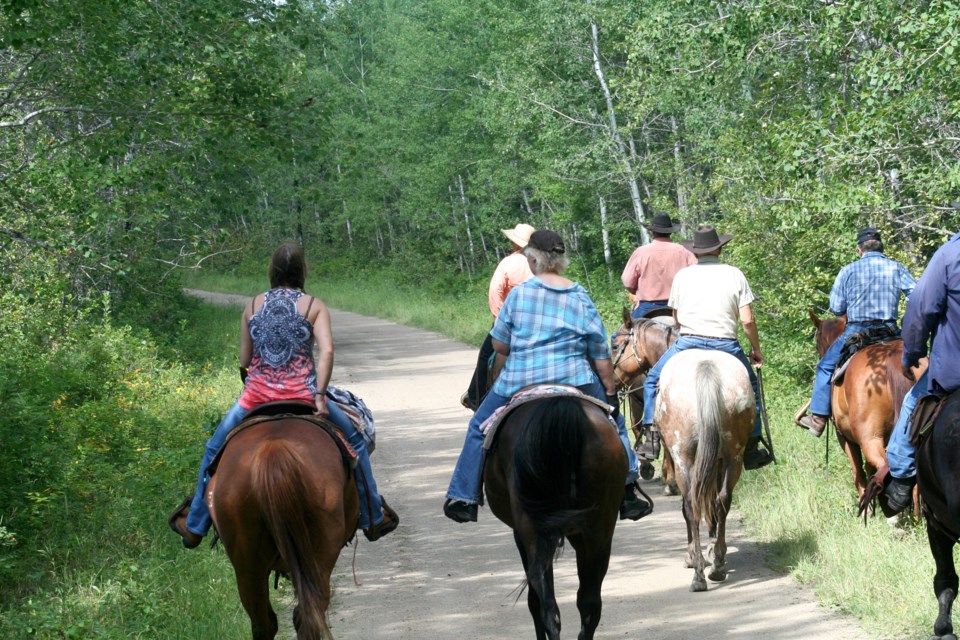LAKELAND - Riverland Recreational Trail Society (RRTS) is exploring its next steps regarding a quarter of land overlooking the North Saskatchewan River it had hoped to lease from the owners of the Windsor Salt Plant near Lindbergh. With word the plant is shutting down, the group now has to rethink their approach to acquiring the land which they would like to see become an attraction as part of the Iron Horse Trail.
In speaking to County of St. Paul council last month, RRTS representative Marianne Janke said the society’s 10-year strategic development plan released last fall recognizes the need to further develop attractions as part of the trail. With the goal being to have the Iron Horse Trail become one of the “must experience” destinations in Alberta, Janke said one of the key points that came out of the strategic plan was to “animate” the trail.
“What we mean by that is just to develop more things for people to stop and see and do,” she said, adding in the 20 years since the trail’s development, visitors have gone from wanting to ride their ATVs down the trail for the day to now include those wanting to plan a several-day excursion and so RRTS is recognizing the need to add amenities that meet that desire.
“When we introduced the 1,400 geocaches on the trail, I had two guys fly in from Australia to come and do the Iron Horse Trail because of the geocaching . . . It’s what more can we do to elevate the Iron Horse Trail to be a major tourist attraction for this region. It is, but we want to make it bigger and better.”
Four areas along the trail have been identified as locations that could be used to animate the trail further which include the Beaver River trestle, two sites for potential adventure play parks and the quarter of land near Lindberg as a river-view rest area.
Janke said RRTS did get confirmation last year from plant owners Morton Salt, that a lease arrangement was possible but since that time the company has decided to shut down the plant’s operation. While there is some indication a lease option may still be possible, Janke said the preference for the company is to sell it.
RRTS is hoping to acquire some funding through Trans Canada Trail to support adding the property to the Iron Horse Trail and Janke is exploring the potential for achieving that through a grant process.
“It does have great historical significance in the entire history of the region. It is the only point that we’ve been able to map out where the Carlton Trail and Iron Horse Trail actually intersect. It was a stopping point for the North West Mounted Police as they moved into Alberta,” she said, adding the original telegraph station for Alberta was situated nearby.
“Lots of pieces of history just seem to connect at that quarter-section of land . . . combined with the beautiful view, which makes it appealing to develop that piece of property.”
Janke said there are many ideas as to what could be situated at the site, and it is an opportunity that would be lost if the land was to be used for another purpose other than for the trail.
“We are looking for things on the trail that we can open up not only to trail users but to visitors off the highway,” she said, pointing out there is access off Sec. Hwy. 646. “Not only would we be able to make it something for trail users but whatever we look at doing there we could pull people in off the highway.”
Council accepted Janke’s presentation as information and asked to be kept apprised of RRTS’s progress on potentially acquiring the land.
“I think there’s some creative opportunities for us,” CAO Sheila Kitz said in terms of the county providing support to the RRTS for the initiative.



